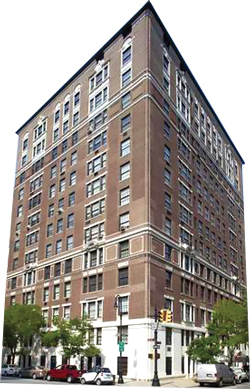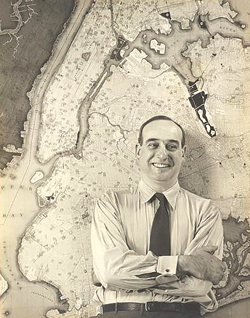1853: New York Crystal Palace Opens to Fanfare
New York’s short-lived Crystal Palace, constructed entirely of iron and glass and considered a wonder of its day, opened at what is now Bryant Park 163 years ago this month. The domed building, which housed an exhibition on the various industries of nations across the globe, reflected the intense rivalry between New York and London. Two years prior, in 1851, London had hosted an incredibly popular exhibition as a precursor to the World’s Fair, and built its own Crystal Palace for the occasion. New York’s Crystal Palace was made of 40,000 square feet of glass and featured 1,250 tons of iron in the shape of a Greek cross. The building contained more than 4,000 exhibits. “The mind becomes very soon exhausted from the quantity of material crowded on the view,” the New York Times reported. Over the years, attendance dwindled and the building eventually reopened under new management as a space for special events. But it was not for long. In 1858, the building was destroyed by a fire. The site became a park in 1871.
1916: Apartment Boom on Park and West End Avenues

570 Park Avenue, which was built in 1916
New York City was in the midst of a high-rise construction boom 100 years ago this month, with a large number of apartment buildings in the works, as well as additions to existing ones, the New York Times reported. The trend reflected a growing willingness among the wealthy to live in apartment dwellings as opposed to private houses. “[M]ore and more every year New York is becoming a city of cliff dwellers,” the Times reported. Park Avenue was emerging as the preeminent apartment address, with 17 new buildings going up. “Park Avenue is the finest apartment house thoroughfare in the world,” the paper declared. “It contains the largest and finest houses, in respect to number, and also commands the highest rents.” Meanwhile, its West Side counterpart, West End Avenue, saw 11 new high-rise projects. Agents were citing a record year in leasing. A 17-story building at 420 Park Avenue was fully occupied four months prior to its completion, and many other buildings were 75 percent leased. Rents ranged from $2,000 to more than $10,000 a year.
1981: Robert Moses Dies

Robert Moses
Robert Moses, the heralded and controversial master builder credited with shaping New York and the vision of the 20th-century city, died 35 years ago this month at age 92. His list of achievements included the Triborough Bridge (later renamed after Robert F. Kennedy), Jones Beach State Park, Verrazano-Narrows Bridge, West Side Highway, the Long Island parkway system and 658 playgrounds in New York City. “Neither an architect, a planner, a lawyer, nor even, in the strictest sense, a politician, he changed the face of the state more than anyone who was,” wrote New York Times architecture critic Paul Goldberger. For 44 years, Moses wielded great influence through various city- and state-appointed posts, which he often held simultaneously. Initially beloved, his popularity waned in the 1960s, as Americans became disenchanted with clogged highways and re-embraced public transit and walkability. Robert Caro’s 1974 biography of Moses, “The Power Broker,” offered a critical perspective of the planner’s slum-clearance initiatives, which Caro charged were motivated by his racism and disdain for the urban poor. Over the years, some architectural historians have tried to revisit Moses. In 2007, the Museum of the City of New York, the Queens Museum of Art and Columbia University mounted three exhibitions devoted to his work.